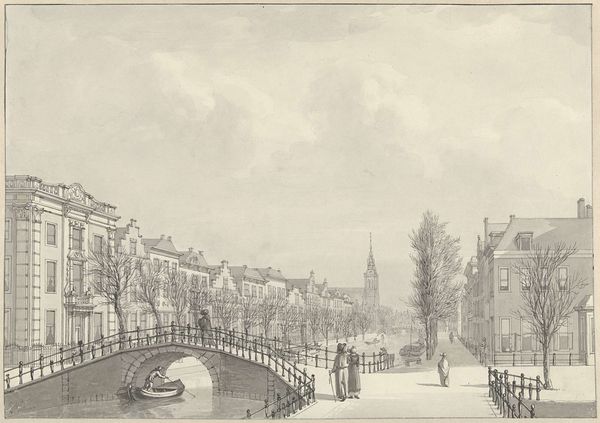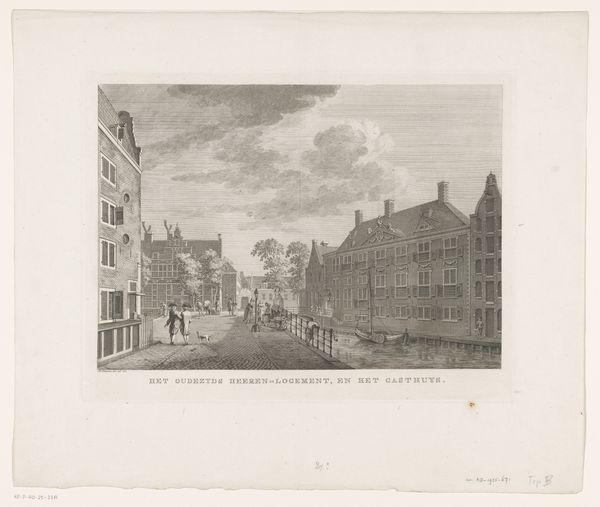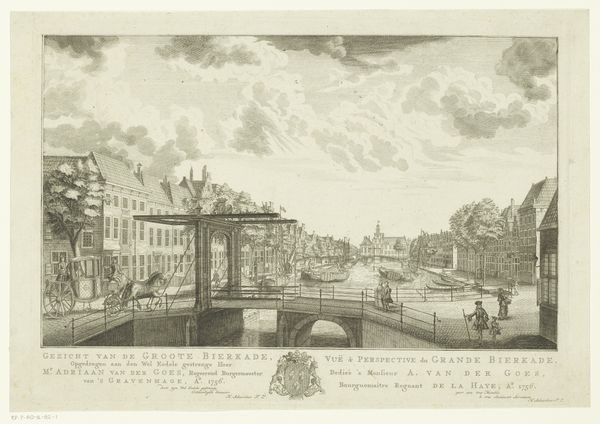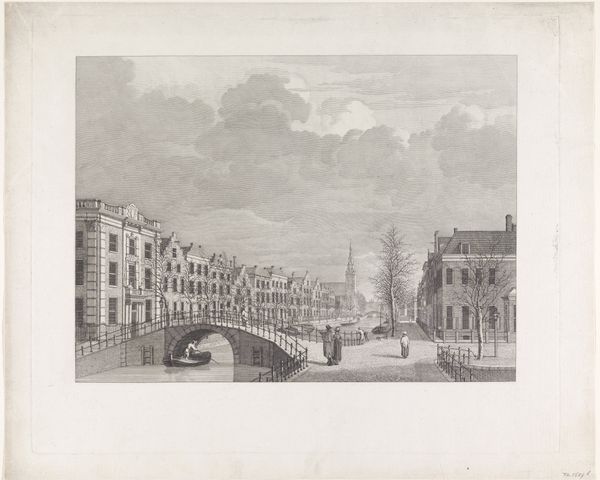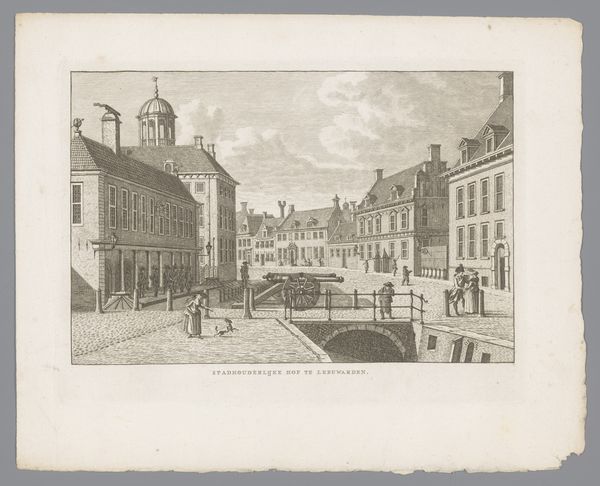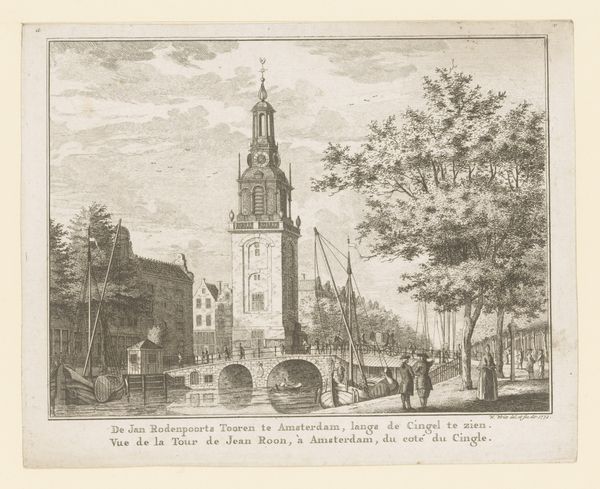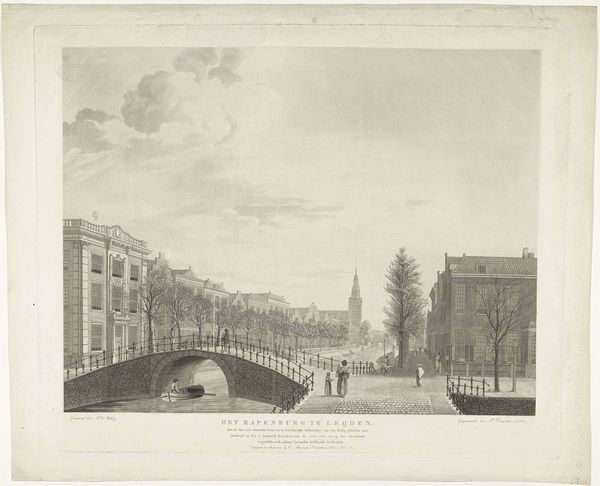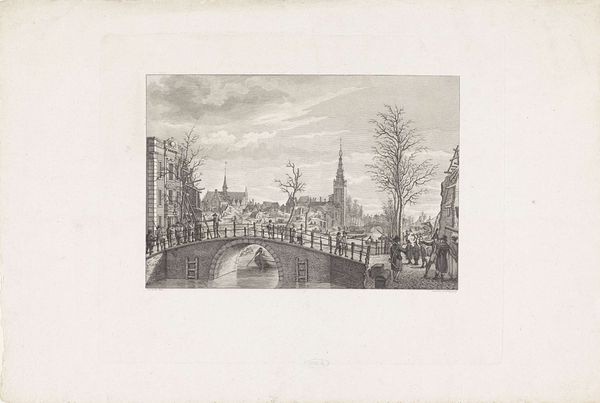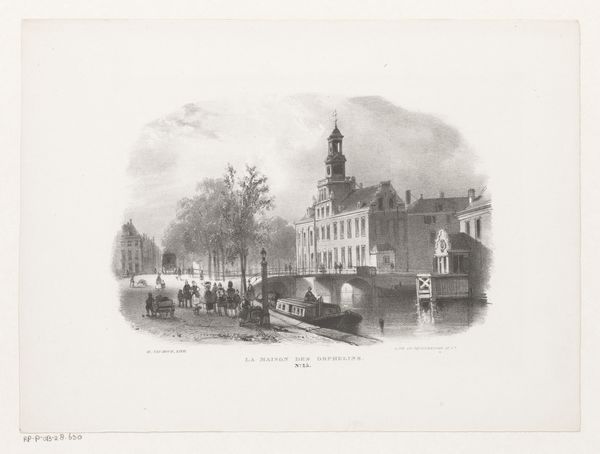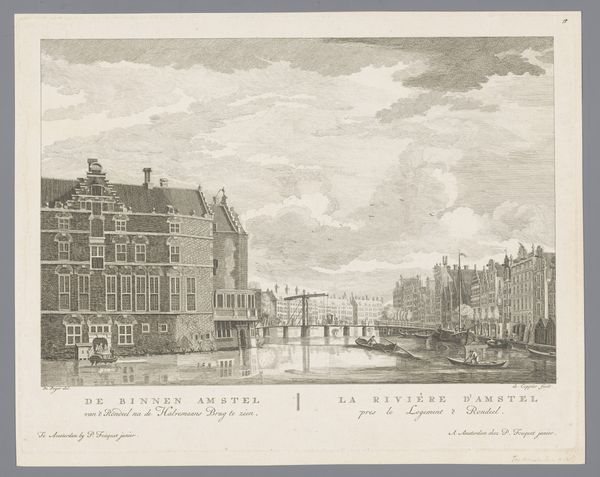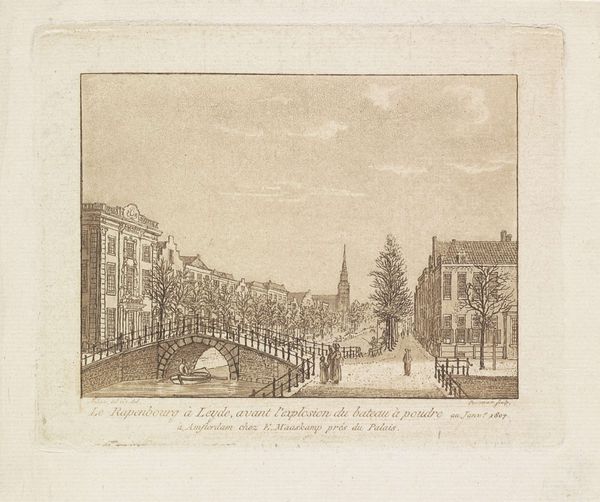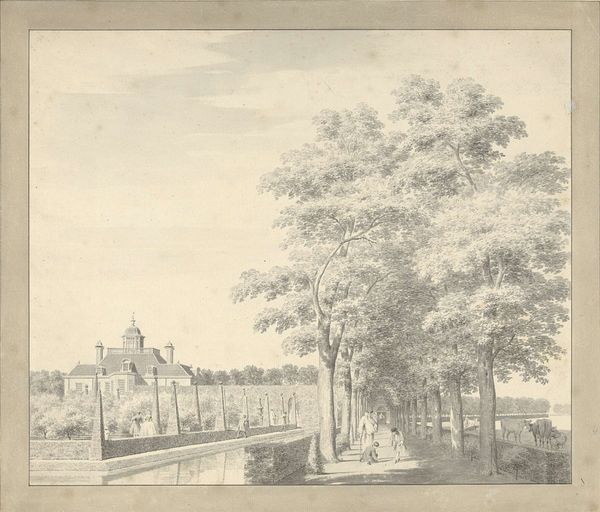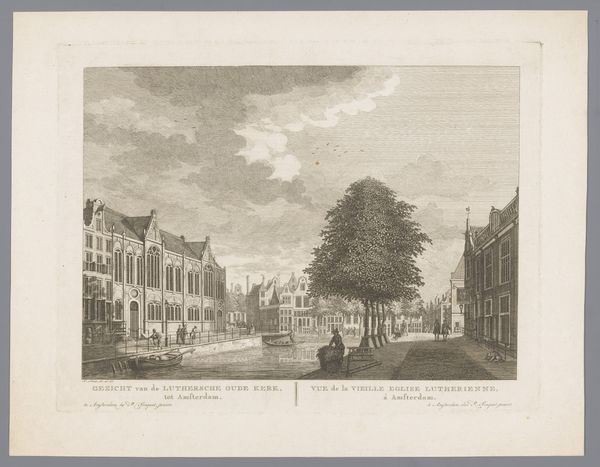
drawing, engraving
#
drawing
#
old engraving style
#
historical photography
#
romanticism
#
19th century
#
cityscape
#
engraving
Dimensions: height 290 mm, width 381 mm
Copyright: Rijks Museum: Open Domain
Curator: Let’s turn our attention to “Gezicht op het Rapenburg te Leiden, 12 januari 1807,” a drawing by Ludwig Gottlieb Portman, currently held at the Rijksmuseum. Editor: It has an airy quality. Very clean lines in a romanticist style, which softens its rigor and gives it an idyllic feel. The palette is incredibly restricted though; mostly sepia tones. Curator: Indeed. Consider the choice of engraving as a means to reproduce and disseminate imagery. What does that tell us about 19th-century society, the drive to catalogue and circulate views of Dutch life? Editor: The industrial element is downplayed; the texture has that romanticist soft focus despite the lines coming from what I assume is either an engraving or something similar. Is there a tension, perhaps, between portraying a very "normal" cityscape while actually partaking in emerging modern industrial methods? Curator: I think so, and let’s examine what it pictures: a canal, people strolling leisurely, houses, and a church spire puncturing the sky. Portman constructs a visual archive; symbols of civic identity that still resonate. A curated display of order. The water motif itself hints at cleansing, but is this cleaning society or something else entirely? Editor: Cleanliness is interesting, thinking materially about the drawing's origin. Engraving requires a specific labor process – design transferred, etched onto metal. So it moves past "natural observation." It transforms the scene into something... ordered in ways society often cannot live up to. It highlights the effort of reproducing such an image versus, say, quickly painting. Curator: Exactly! And I am fascinated by how he simplifies Leiden's appearance while also communicating values about urban space. The artist selected this moment to create a timeless visual of community. He captures a universal "ordinariness" that would hold appeal, even idealized in the cultural imagination across centuries. Editor: So ultimately, in seeing its medium and subject, Portman’s drawing is far from innocent. By depicting quotidian life using reproductive technologies it does a lot of symbolic work to communicate cultural identity. I like what that tells us. Curator: Yes, the materials and symbolic details combined reveal so much. Thanks for bringing this out into focus.
Comments
No comments
Be the first to comment and join the conversation on the ultimate creative platform.
